Comprehensive Guide to Human Sensory Systems: Vision, Hearing, Taste, Smell, Touch, and Pain
1/96
There's no tags or description
Looks like no tags are added yet.
Name | Mastery | Learn | Test | Matching | Spaced |
|---|
No study sessions yet.
97 Terms
Sensation
The sense organs' detection of external physical stimulus and the transmission of information about this stimulus to the brain.
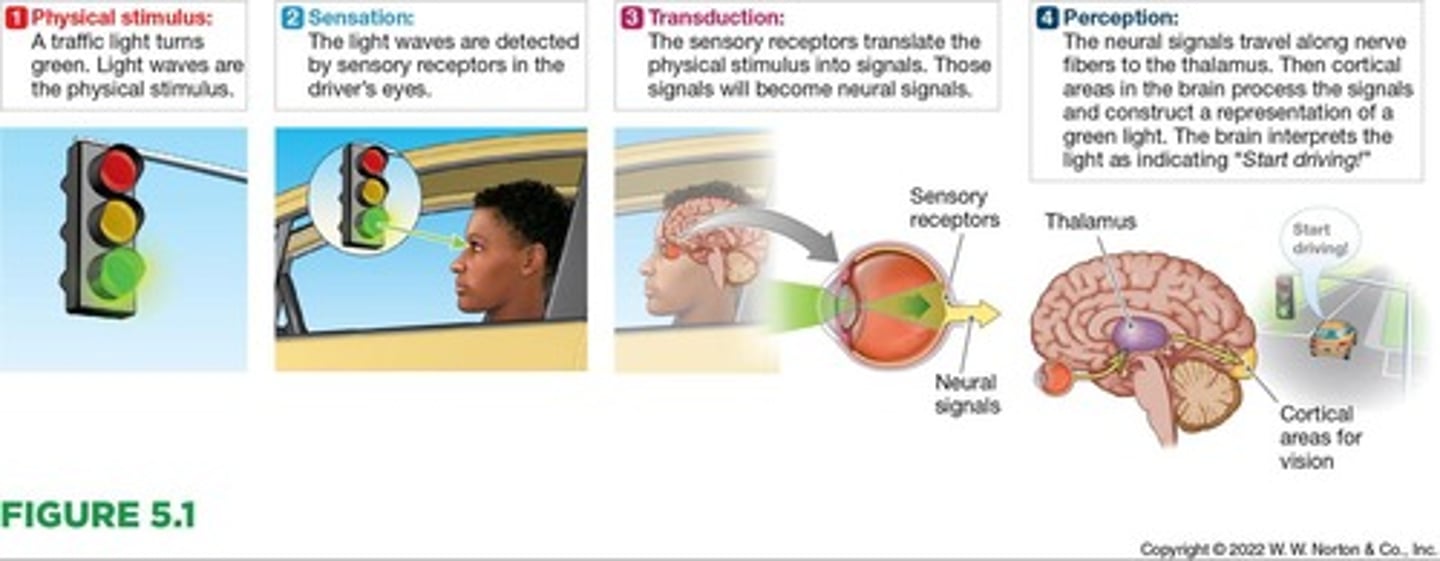
Perception
The processing, organization, and interpretation of sensory information in the brain; these processes result in an internal neural representation of the physical stimulus.
Sensory receptors
Sensory organs that detect physical stimulation from the external world and change that stimulation into information that can be processed by the brain.
Transduction
A process by which sensory receptors change physical stimuli into signals that are eventually sent to the brain.
Absolute threshold
The smallest amount of physical stimulation required to detect a sensory input half of the time it is present.
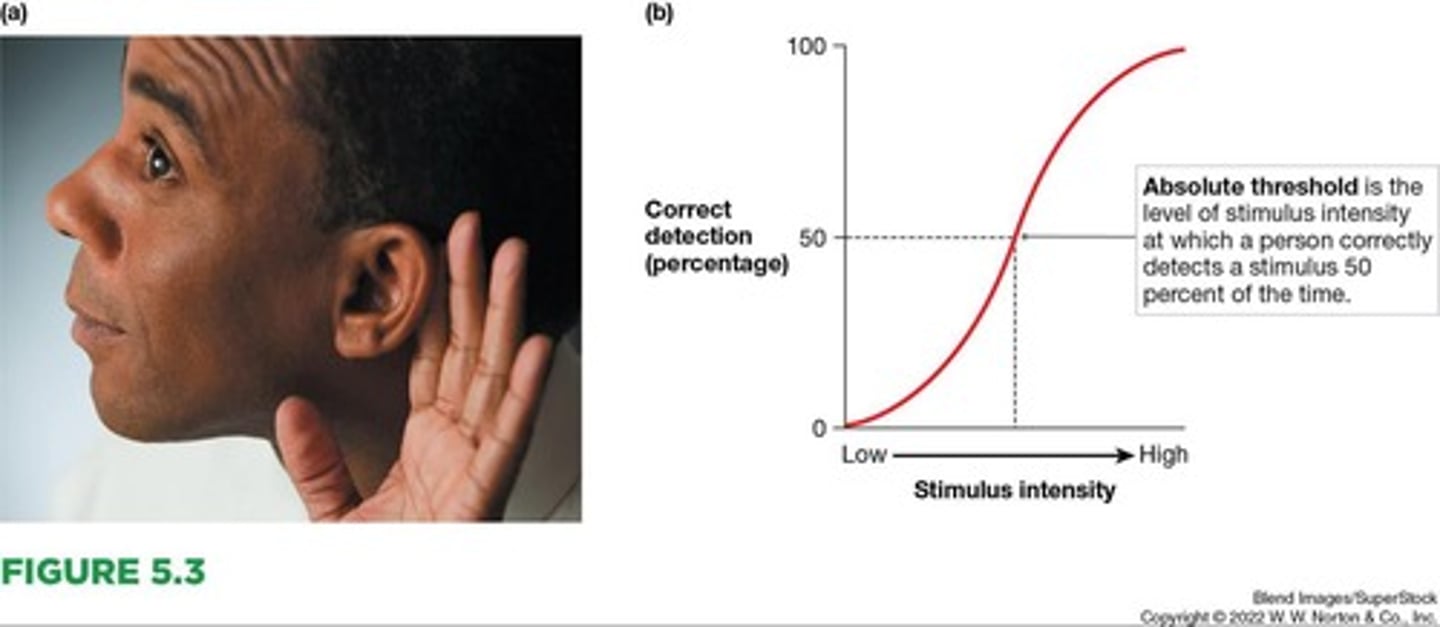
Difference threshold
The minimum difference in physical stimulation required to detect a difference between sensory inputs.
Weber's law
A principle that states the difference threshold is a constant proportion of the original stimulus.
Just-noticeable difference
The smallest change in a stimulus that can be detected half the time.
Taste
1 teaspoon of sugar in 2 gallons of water.

Smell
1 drop of perfume diffused into the entire volume of six rooms.
Touch
A fly's wing falling on your cheek from a distance of 0.04 inch.
Hearing
The tick of a clock at 20 feet under quiet conditions.
Vision
A candle flame 30 miles away on a dark, clear night.
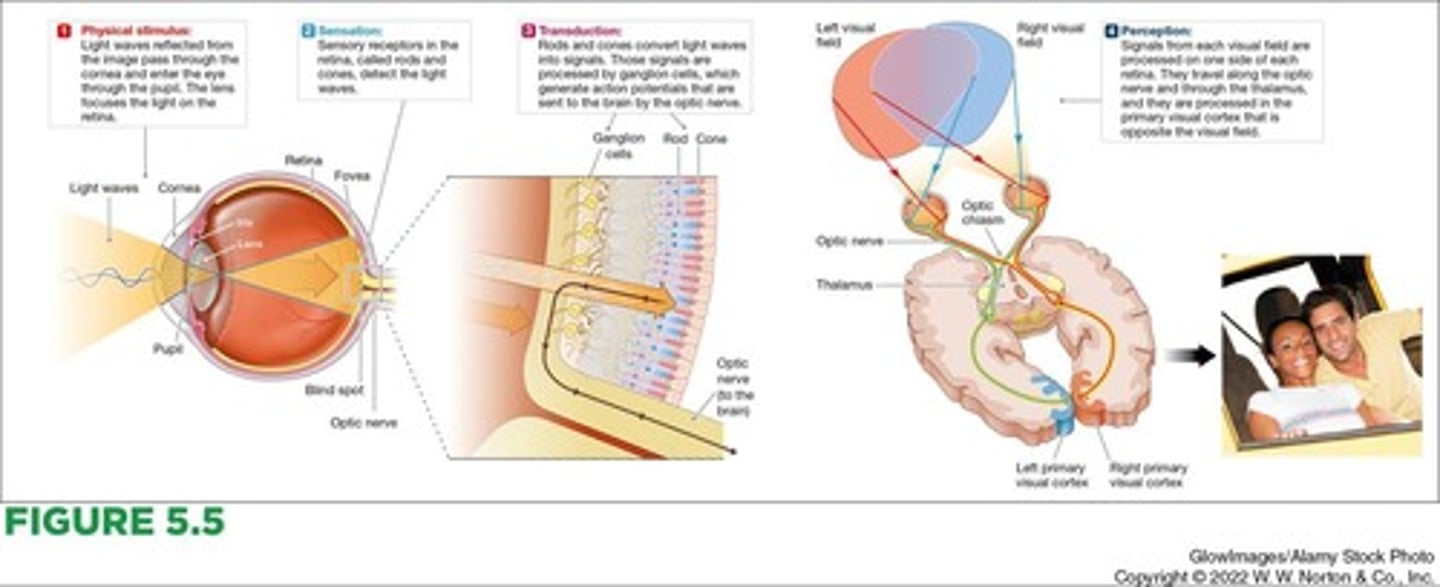
Sensory adaptation
A decrease in sensitivity to a constant level of stimulation.
Color perception
You perceive color based on physical aspects of light.
Visual organization
You perceive objects by organizing visual information.
Depth perception
When you perceive depth, you can locate objects in space.
Motion perception
Cues in your brain and in the world let you perceive motion.
Object constancy
You understand that objects remain constant even when cues change.
Light detection
Sensory receptors in your eyes detect light.
Iris
A circular muscle that gives eyes their color and controls the pupil's size to determine how much light enters the eye.
Lens
An adjustable, transparent structure behind the pupil that focuses light on the retina, resulting in a crisp visual image.
Retina
The thin inner surface of the back of the eyeball that contains the sensory receptors.
Rods
Sensory receptors in the retina that detect light waves and transduce them into signals processed in the brain as vision; they respond best to low levels of illumination and do not support color vision or detection of fine detail.
Cones
Sensory receptors in the retina that detect light waves and transduce them into signals processed in the brain as vision; they respond best to higher levels of illumination and are responsible for color and fine detail.
Fovea
A small region near the center of the retina where cones are densely packed.
Optic Nerve
A bundle of axons from ganglion cells that carries information from the eye to the brain.
Blind Spot
Areas in the left and right visual fields where the optic nerve exits the retina.
Thalamus
A brain structure through which information from the optic nerve passes before reaching the primary visual cortex.
Primary Visual Cortex
The area in the occipital lobes of the brain where visual information is processed.
Visible Light
Electromagnetic waves ranging in length from about 400 to 700 nanometers.
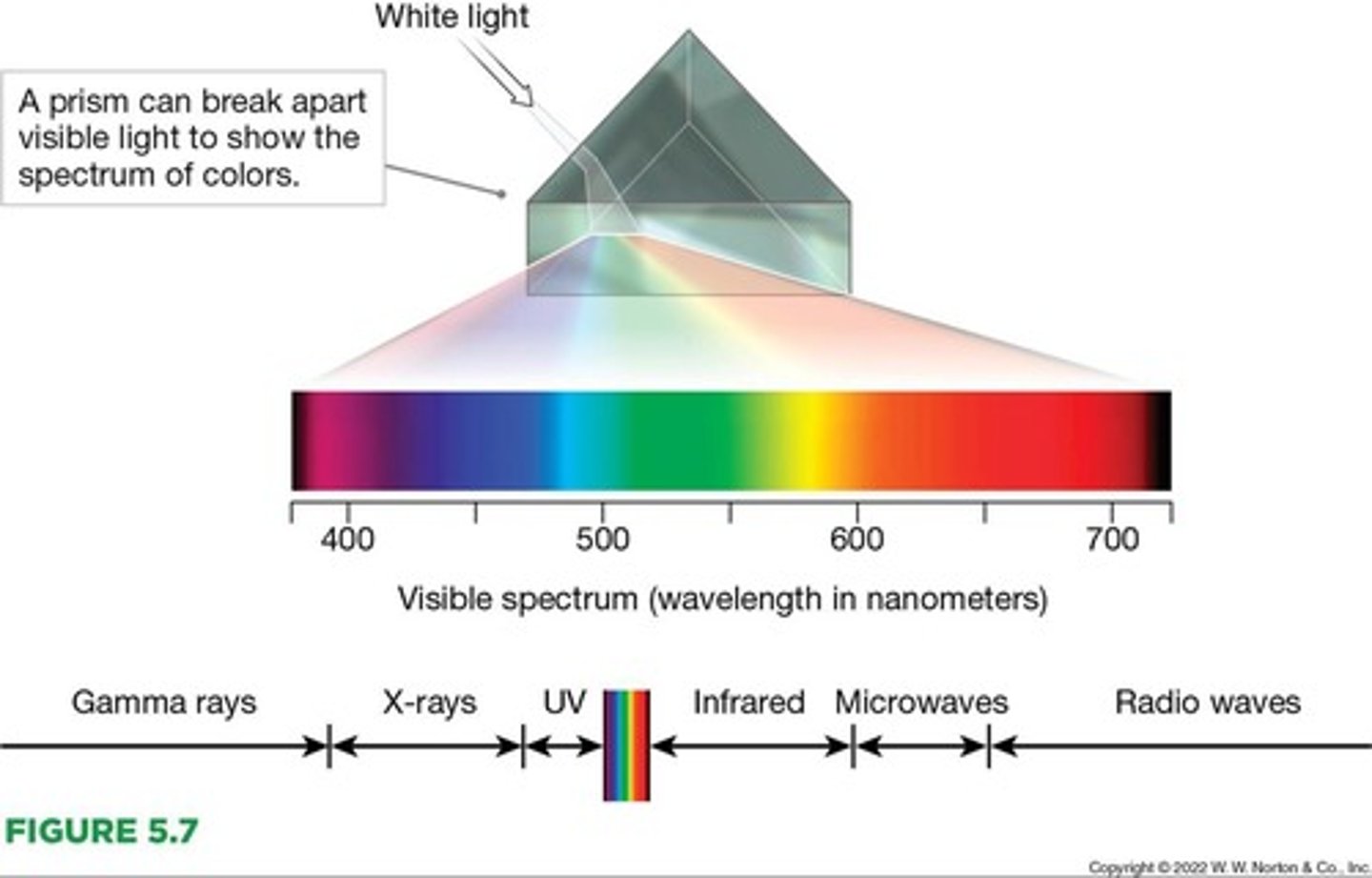
Amplitude
The height of the light wave from base to peak, experienced as brightness.
Wavelength
The distance from peak to peak of a light wave, determining the perception of hue.
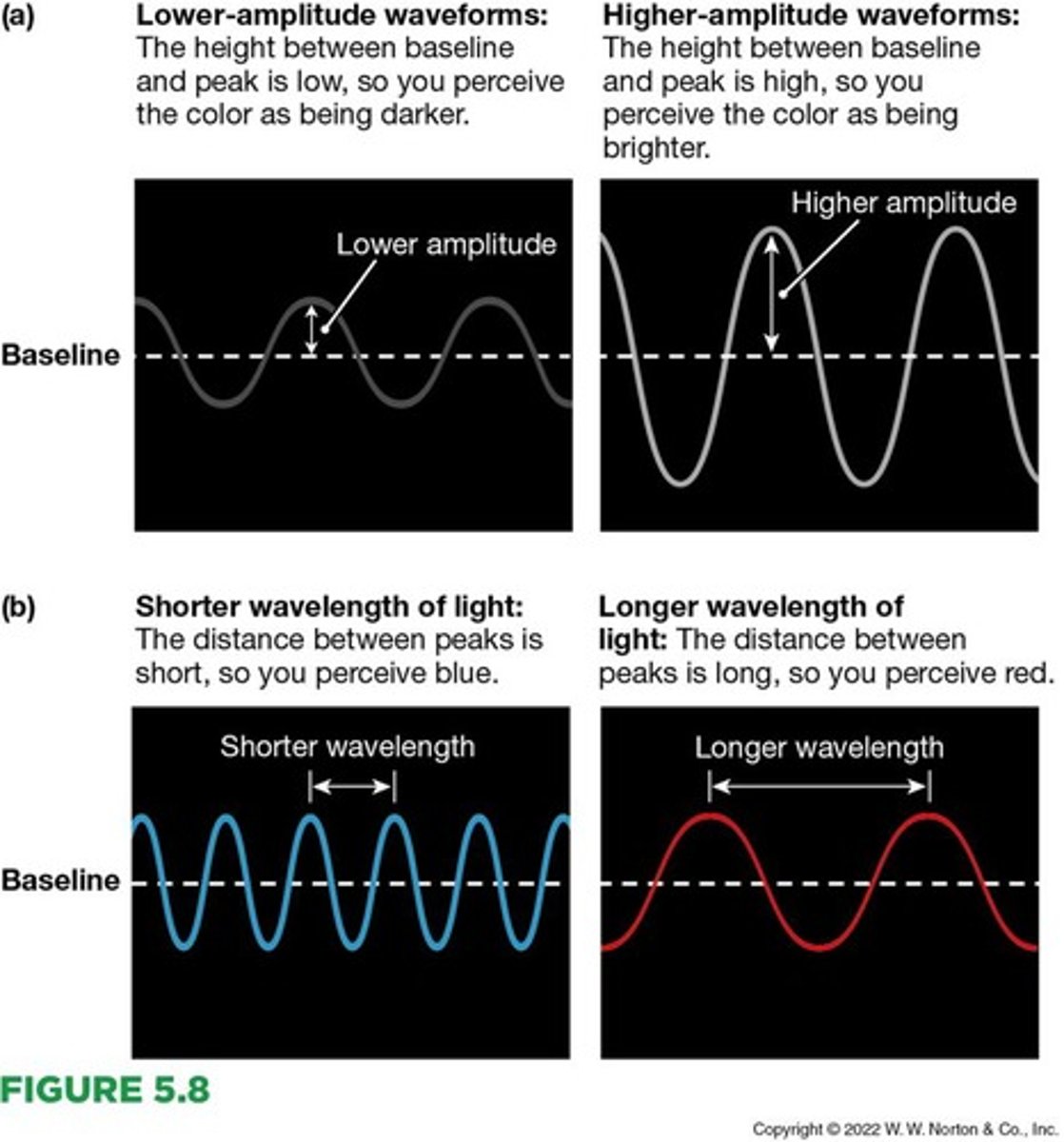
Hue
The distinctive characteristics that place a particular color in the spectrum.
Trichromatic Theory
The theory that there are three types of cone receptor cells in the retina responsible for color perception, each responding optimally to different but overlapping ranges of wavelengths.
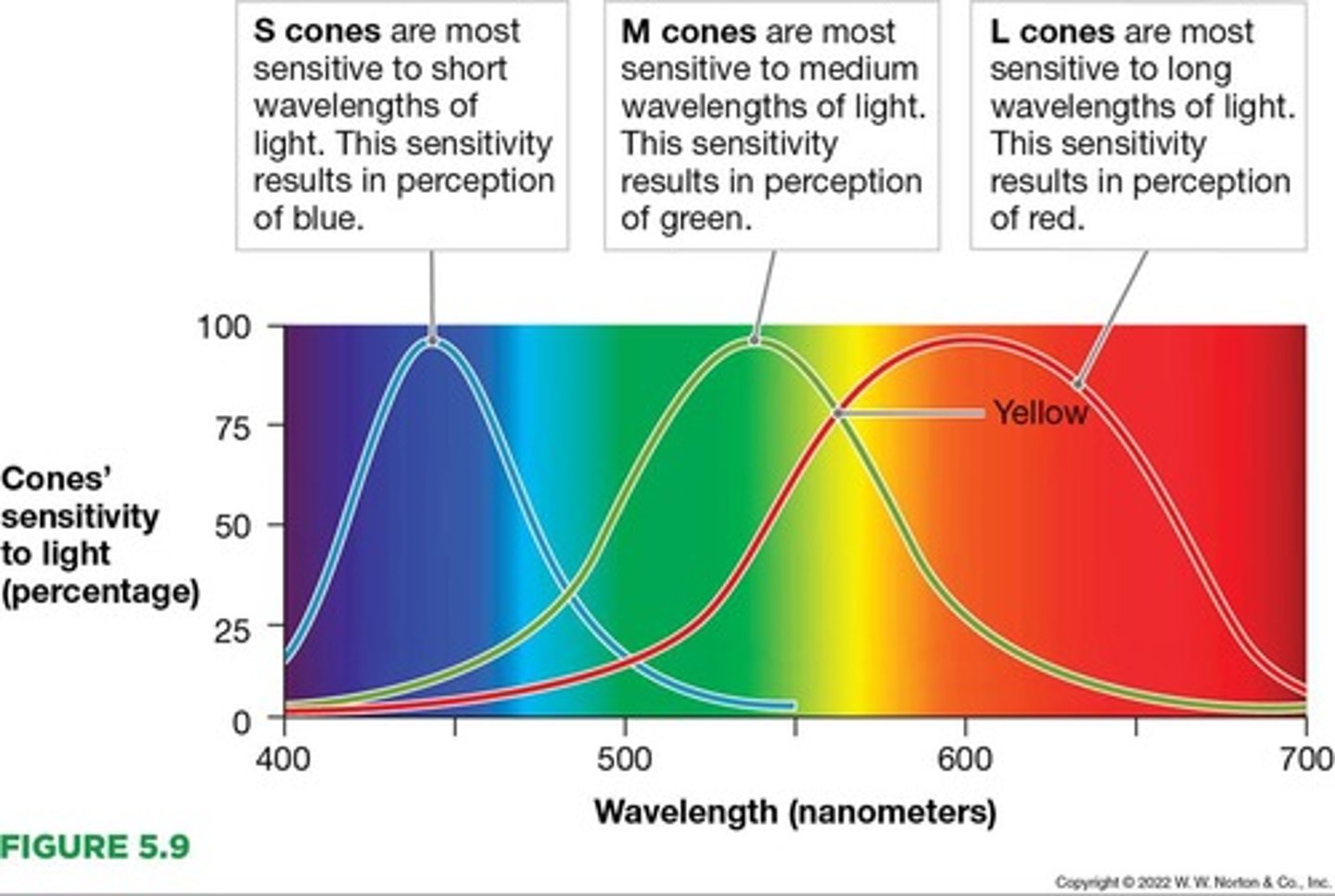
Opponent-Process Theory
The idea that ganglion cells in the retina receive excitatory input from one type of cone and inhibitory input from another type, creating the perception that some colors are opposites.
Gestalt Psychology
A psychological approach that postulates laws to explain how our brains group perceived features of a visual scene into organized wholes.

Figure and Ground
The distinction between an object (figure) and the background (ground) in a visual scene.
Grouping
The visual system's organization of features and regions to create the perception of a whole, unified object.
Bottom-Up Processing
The perception of objects due to analysis of environmental stimulus input by sensory receptors, influencing more complex, conceptual processing of that information in the brain.
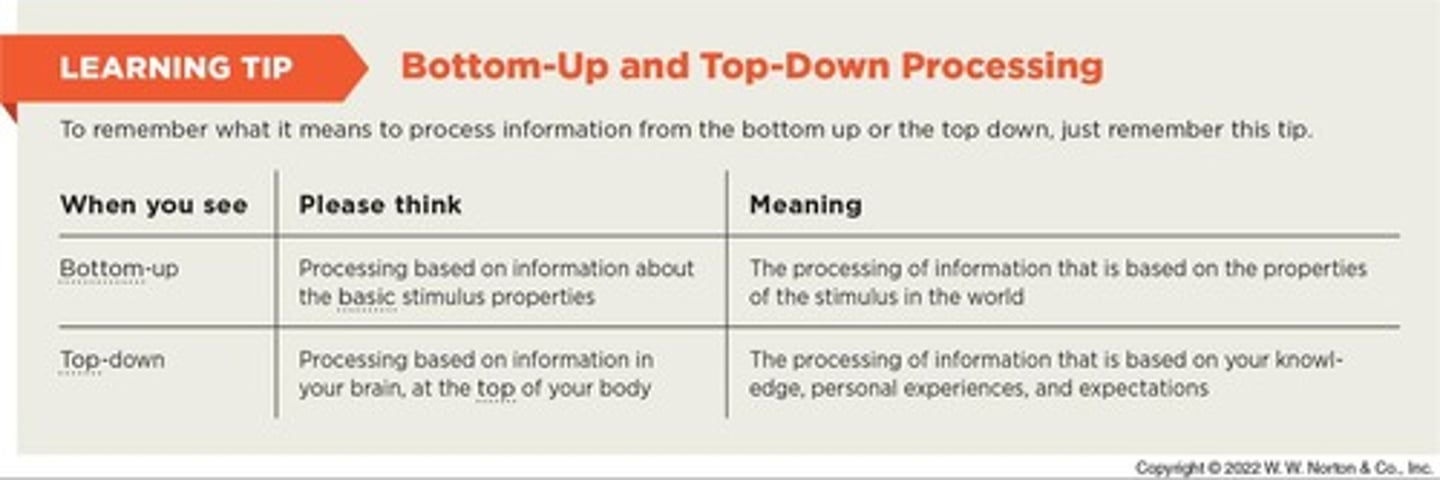
Top-down processing
The perception of objects is due to the complex analysis of prior experiences and expectations within the brain; this analysis influences how sensory receptors process stimulus input from the environment.
Perceptual sets
Tendencies to perceive stimuli in specific ways that make sense given prior experiences and expectations.
Binocular depth cues
Cues of depth perception that arise because people have two eyes.
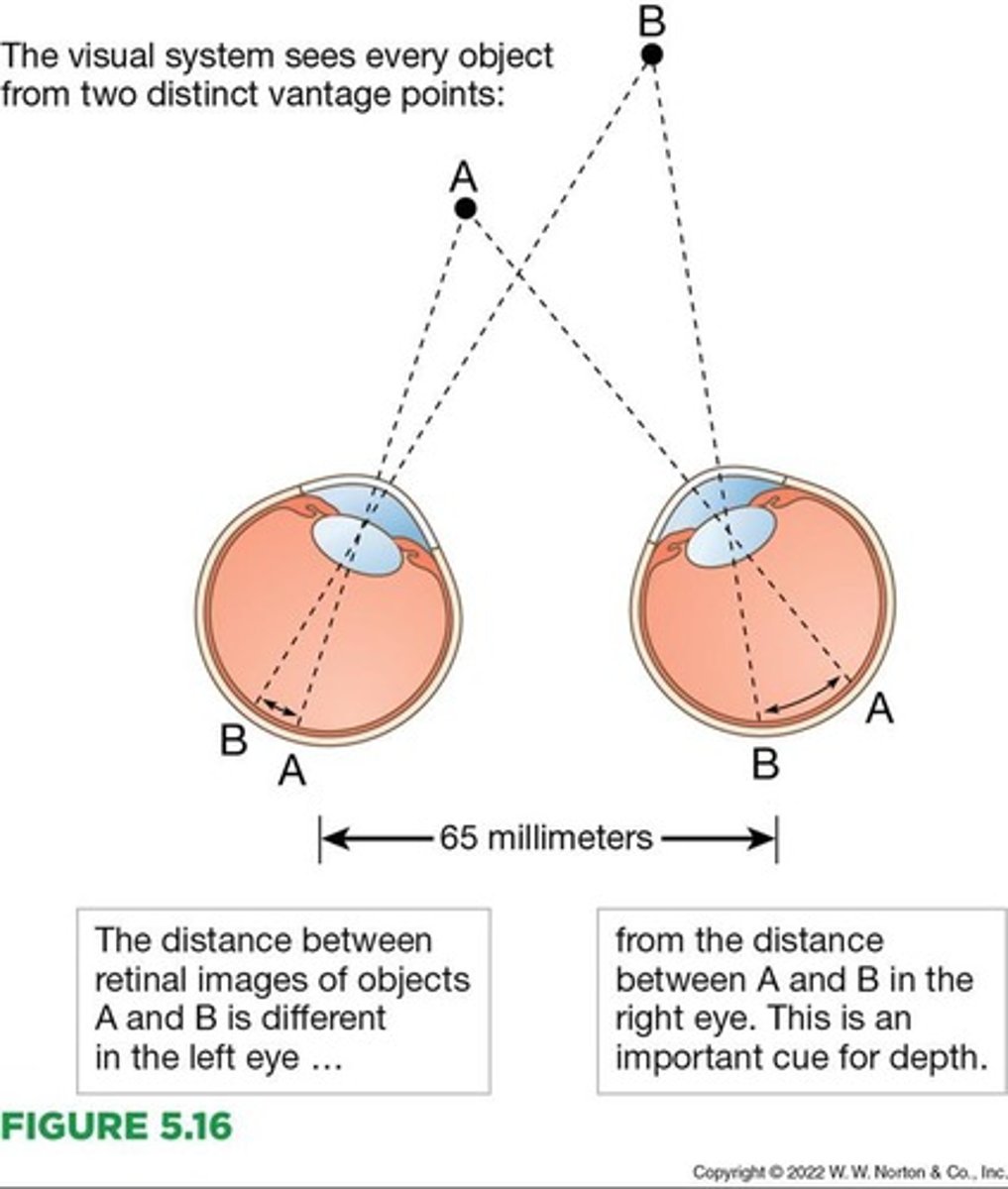
Monocular depth cues
Cues of depth perception that are available to each eye alone.
Binocular depth perception
We use both eyes to perceive depth through binocular disparity, where each retina has a slightly different view of the world.
Example of binocular depth perception
Glasses for watching 3D movies. Those glasses are polarized to allow different types of lights through, so each eye sees a slightly different version of the film.
Motion aftereffects
May occur when you gaze at a moving image for a long time and then look at a stationary scene.
Waterfall effect
A momentary impression that the new scene is moving in the opposite direction from the moving image.
Stroboscopic motion
Movies are made up of still images, each of which is slightly different from the one before it. When the series is presented fast enough, we perceive the illusion of motion pictures.
Color constancy
The perception of colors as constant even under varying lighting conditions.
Eardrum
A thin membrane that marks the beginning of the middle ear; sound waves cause the eardrum to vibrate.
Cochlea
A coiled, bony, fluid-filled tube in the inner ear that houses the sensory receptors.
Basilar membrane
Running through the center of the cochlea, it is a thin membrane.
Hair cells
Sensory receptors located in the cochlea that detect sound waves and transduce them into signals that ultimately are processed in the brain as sound.
Noise-induced hearing loss
Affects more than 5 million young people—nearly 13 percent of American children between the ages of 6 and 19.
60/60 rule
A guideline to protect hearing by listening to music at no more than 60% volume for no longer than 60 minutes.
Loudness in Decibels
A measurement of sound intensity, where different sounds have varying decibel levels.
Whisper
Safe for any length of time, approximately 30 decibels.
Normal conversation
Safe for any length of time, approximately 60 decibels.
Dishwasher
Safe for any length of time, approximately 70 decibels.
Vehicle traffic
85 decibels, safe for 8 hours.
Gas lawnmower
85 decibels, safe for 2 hours.
Earbuds or headphones
Listening to music on devices can reach 95-115 decibels, with damage occurring in 2 minutes.
Sirens
110-129 decibels, with damage occurring in less than 1 minute.
Jet engine
140 decibels, causing immediate damage without hearing protection.
Gunshot
165 decibels, causing immediate damage without hearing protection.
Rocket launch
180 decibels, causing immediate damage without hearing protection.
Frequency
The time between peaks in wavelength, measured in hertz, determining the pitch of sound.
Temporal coding
The perception of lower-pitched sounds based on the rate at which hair cells are stimulated by lower frequency sound waves.
Place coding
The perception of higher-pitched sounds based on the point on the basilar membrane where hair cells are stimulated.
Localization
The ear estimates the location of a sound based on when the sound arrives and the amplitude of the sound wave.
Vestibular sense
Allows us to maintain balance using information from receptors in the semicircular canals of the inner ear.
Taste (gustation)
The sense that detects flavor, processed through taste buds located in papillae on the tongue.
Taste buds
Structures located in papillae on the tongue that contain sensory receptors for taste.
Papillae
Structures on the tongue that contain groupings of taste buds.
Five main tastes
Sweet, sour, salty, bitter, and umami are the five basic taste qualities.
Supertasters
Individuals with nearly six times as many taste buds as normal tasters, highly aware of flavors and textures.
Taste preference
Influenced by the texture of food and cultural factors, beginning in the womb.
Olfaction
The sense of smell, which is the main way dogs perceive the world.
Olfactory receptors
Specialized receptors that detect odorants, with dogs having 40 times more than humans.
Olfactory epithelium
A thin layer of tissue, deep within the nasal cavity, containing the olfactory receptors; these sensory receptors produce information that is processed in the brain as smell.
Olfactory bulb
A brain structure above the olfactory epithelium in the nasal cavity; from this structure, the olfactory nerve carries information about smell to parts of the brain, including the primary olfactory cortex.
Odorants
Chemical molecules that are detected by olfactory receptors.
Human odor detection
According to a recent estimate, humans can distinguish more than a trillion odorants.
Prefrontal cortex
Information about whether a smell is pleasant or unpleasant is processed in the brain's prefrontal cortex.
Amygdala
The smell's intensity is processed in the amygdala, a brain area involved in emotion and memory.
Warm receptors
Sensory receptors in the skin that detect the temperature of stimuli and transduce it into information processed in the brain as warmth.
Cold receptors
Sensory receptors in the skin that detect the temperature of stimuli and transduce it into information processed in the brain as cold.
Pressure receptors
Sensory receptors in the skin that detect tactile stimulation and transduce it into information processed in the brain as different types of pressure on the skin.
Cranial nerves
The sensation of touch above the neck is sent to the brain directly via cranial nerves.
Spinal nerves
The sensation of touch below the neck is sent to the spinal cord, and then spinal nerves transmit the information to the primary somatosensory cortex in the brain.
Primary somatosensory cortex
The area of the brain that processes touch information.
Kinesthetic sense
Our kinesthetic sense tells us how our body and limbs are positioned in space.
Fast fibers
Sensory receptors in the skin, muscles, organs, and membranes around both bones and joints; these myelinated fibers quickly convey intense sensory input to the brain, where it is perceived as sharp, immediate pain.
Slow fibers
Sensory receptors in the skin, muscles, organs, and membranes around both bones and joints; these unmyelinated fibers slowly convey intense sensory input to the brain, where it is perceived as chronic, dull, steady pain.
Gate control theory
We experience pain when pain receptors are activated and a neural 'gate' in the spinal cord allows the signals through to the brain.
Distraction and pain perception
Distraction can reduce your perception of pain; listening to music is an extremely effective way to reduce postoperative pain, perhaps because it helps patients relax.